
On August 15, I (Joy) was able to attend the annual Field Day at the Mountain Horticultural Crops Research and Extension Center down in Mills River. While I only attended the morning sessions, this all-day event was packed with learning all about new plants, new research, new-to-NC plant diseases, and more. Hundreds of small farmers and plant people from all over the state attended this interesting event.
This massive research station is almost 400 acres of plant experiments and it is normally closed to the public; it was fascinating seeing all the many different plants that were being researched, from edible to ornamental.
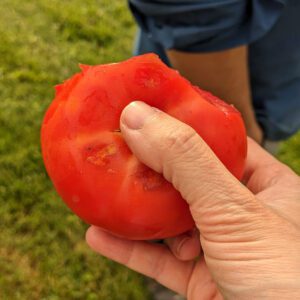 Early morning started off with a sampling of a new large slicer-sized tomato with incredible disease resistance called Mountain Ruby (it is not yet officially called that, its true name is a series of numbers). As the staff member couldn’t find a knife, he handed me a giant, juicy tomato to eat like an apple (see photo). Mountain Ruby is not available yet but is one to look for in the future, by having natural disease resistances – including against Late Blight – it is much easier to grow, and especially to grow organically. For those familiar with Defiant, which also has excellent disease resistance, Mountain Ruby is much larger and the flavor is slightly improved. Aesthetically, it was flawless.
Early morning started off with a sampling of a new large slicer-sized tomato with incredible disease resistance called Mountain Ruby (it is not yet officially called that, its true name is a series of numbers). As the staff member couldn’t find a knife, he handed me a giant, juicy tomato to eat like an apple (see photo). Mountain Ruby is not available yet but is one to look for in the future, by having natural disease resistances – including against Late Blight – it is much easier to grow, and especially to grow organically. For those familiar with Defiant, which also has excellent disease resistance, Mountain Ruby is much larger and the flavor is slightly improved. Aesthetically, it was flawless.
Reems Creek Nursery has long carried Defiant and numerous types of the disease resistant ‘Mountain’ series of tomatoes through our Vegetable Department. They are all excellent alternatives for those struggling to grow tomatoes successfully due to disease issues.
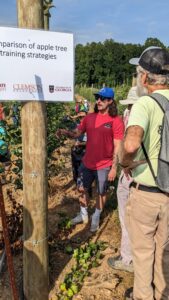
We hopped into the people carriers and were tractored up to the beautiful fruit growing area, mostly filled with apple trees (see top picture). Researchers presented information on a variety of issues for apples and blackberries. Later we were tractored over bucolic fields to listen to researchers discuss tomatoes and their challenges while people ate the free tomato sandwiches on offer.
It is notable that compared to Weaverville, Mills River is slightly lower in elevation (they are 2069′ to our 2146′) and has a little higher rainfall (~50″ to our ~43″). You can see the soil colors in the various pictures – some of the soils in their test plots looked to be sandier and paler than our usual pure rusty orange clays.
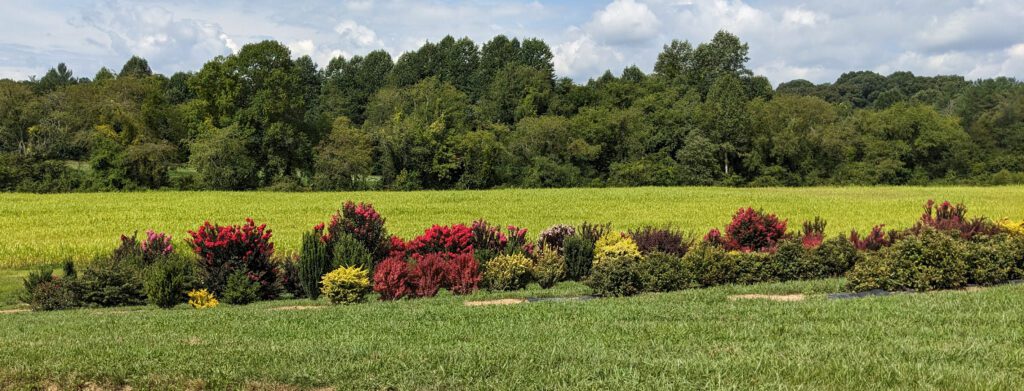
Overall there were a few basic themes in the morning sessions:
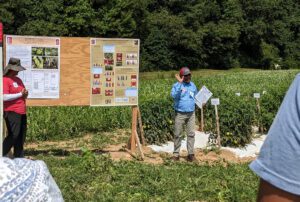 1 – Farming is hard and it is hard to find farmworkers, so breeding plants to be easier to manage and harvest are a priority. This can mean breeding them to be compact so there’s less labor-intensive wrangling of branches (tomatoes), or grafting them onto rootstocks that will keep them more compact and pruned in particular ways to make harvesting easier while keeping farms profitable (apples). It might also mean using chemical thinners to remove excess fruits on plants vs doing it all by hand (apples). Note that removing excess fruits means that the existing ones will be bigger, which is what most of us want – big tasty apples!
1 – Farming is hard and it is hard to find farmworkers, so breeding plants to be easier to manage and harvest are a priority. This can mean breeding them to be compact so there’s less labor-intensive wrangling of branches (tomatoes), or grafting them onto rootstocks that will keep them more compact and pruned in particular ways to make harvesting easier while keeping farms profitable (apples). It might also mean using chemical thinners to remove excess fruits on plants vs doing it all by hand (apples). Note that removing excess fruits means that the existing ones will be bigger, which is what most of us want – big tasty apples!
While the focus is on growing at a larger-though-still-small scale, there are some things going on here that can definitely benefit home gardeners as well.
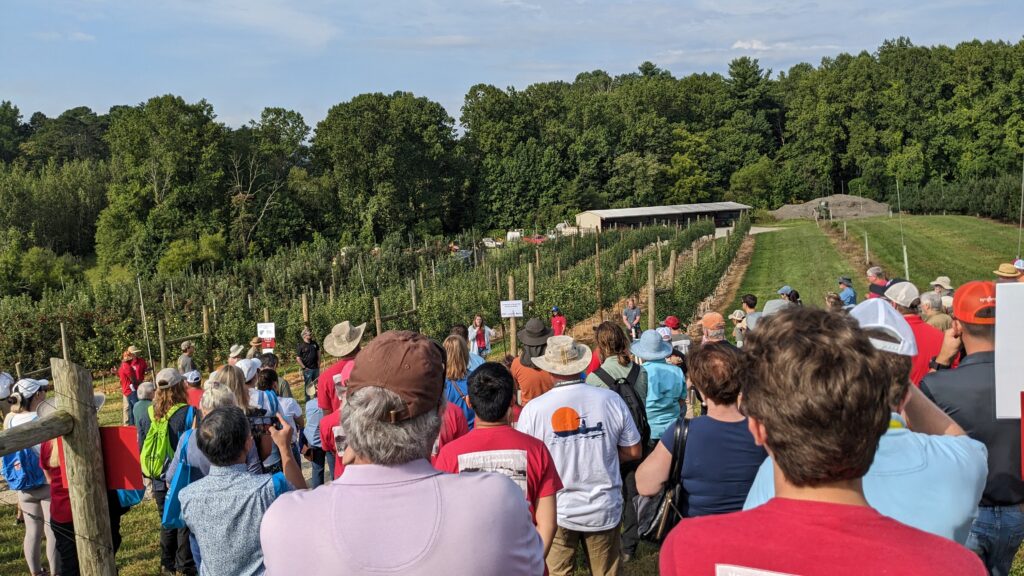
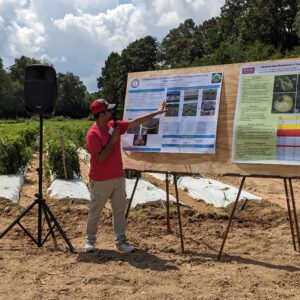 2 – There are new diseases and pests arriving here or some of the ones already here are getting harder to manage. Depending on the disease and pest, there are few to no options for dealing with them. Researchers are scrambling to find answers and/or to breed plants that are more disease and pest-resistant. This is cutting edge stuff as researchers race against time to figure out the genetics behind everything (such as which genes allow certain plants to naturally defy diseases or pests better than others), and therefore which directions future plant breeding needs to go.
2 – There are new diseases and pests arriving here or some of the ones already here are getting harder to manage. Depending on the disease and pest, there are few to no options for dealing with them. Researchers are scrambling to find answers and/or to breed plants that are more disease and pest-resistant. This is cutting edge stuff as researchers race against time to figure out the genetics behind everything (such as which genes allow certain plants to naturally defy diseases or pests better than others), and therefore which directions future plant breeding needs to go.
For instance, Fusarium Wilt has suddenly shown up in NC (currently it is mostly in the southeast part of the state) and it is wiping out entire Blackberry fields in one season. As there is currently no cure or treatment for Fusarium Wilt in Blackberries, it is critical for researchers to help farmers figure out the best ways to grow these tasty plants, and the best types of Blackberries to grow, in order to save the $12,000,000 Blackberry farm industry in NC. Fusarium Wilt in Blackberries is also rapidly spreading to other states, such as Arkansas. Any information our researchers can figure out will be helping numerous small farmers across the country.
3 – These researchers are very knowledgeable about their fields and there is a lot of information, as people try to sum up years of their education and research into 5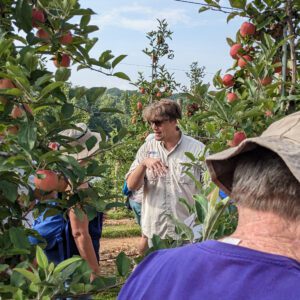 minute speeches. Think of this as an outdoor science fair, where you get to actually see the plants in person. Be sure to take notes! Bring pen and paper!
minute speeches. Think of this as an outdoor science fair, where you get to actually see the plants in person. Be sure to take notes! Bring pen and paper!
Last but not least, all this research from all these bright and clever folks takes funding. More than a few of them were noticeably nervous and uncertain if they would be able to get more grant money to continue their current lines of research the next year.
This event was well attended and I am already excited to see what new plants and new knowledge future field days will bring.
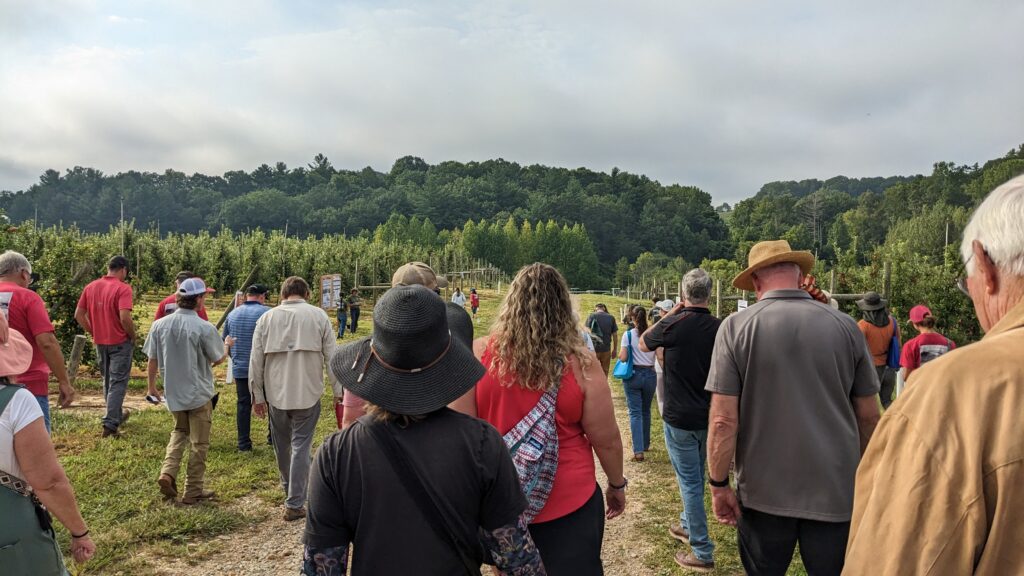
Strolling down the hill in the orchard to hear the next researchers. It was a gorgeous morning!
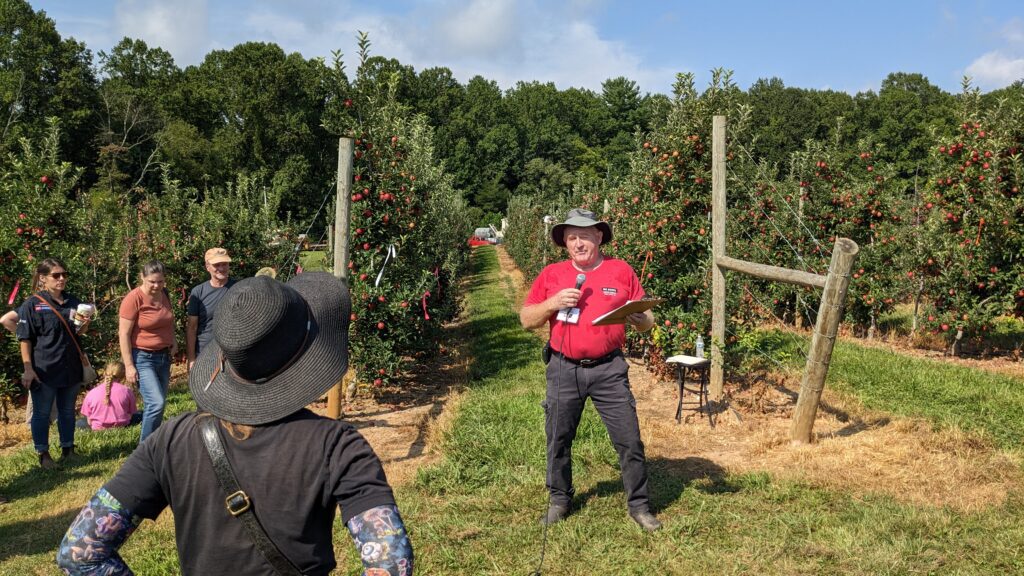
Listening to Michael L. Parker talk about apple trees. Note how densely the trees behind him are planted, see how laden they are with apples. The top wire they are trained on is 9′ tall. Shorter fruit trees are much easier to manage, but check out the amount of infrastructure these trees are grown on.
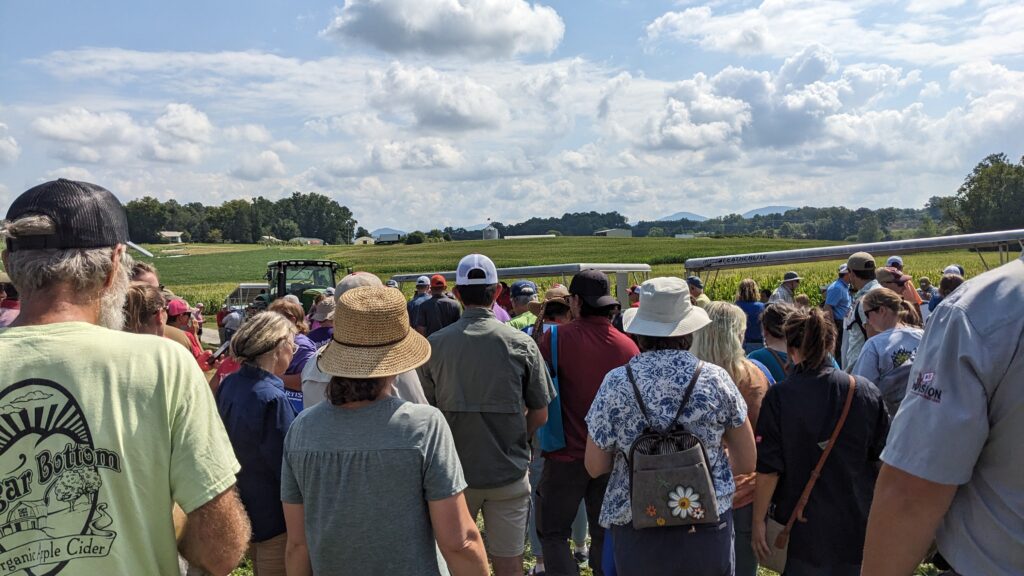
Loading back into the the people carriers under puffy, fluffy clouds.
